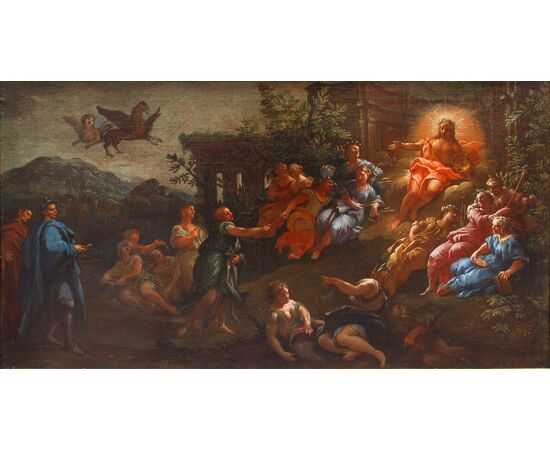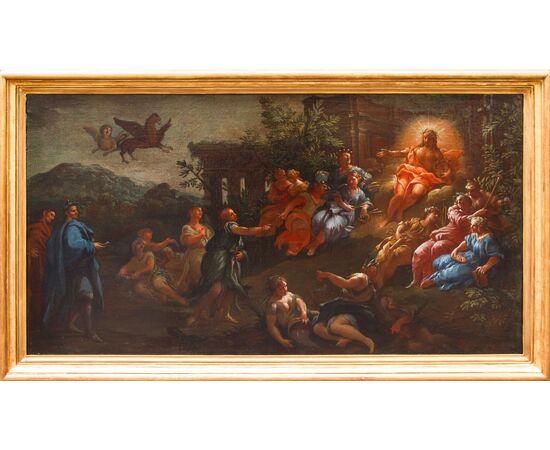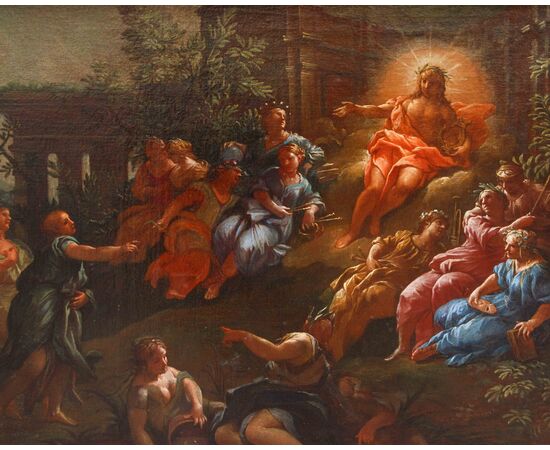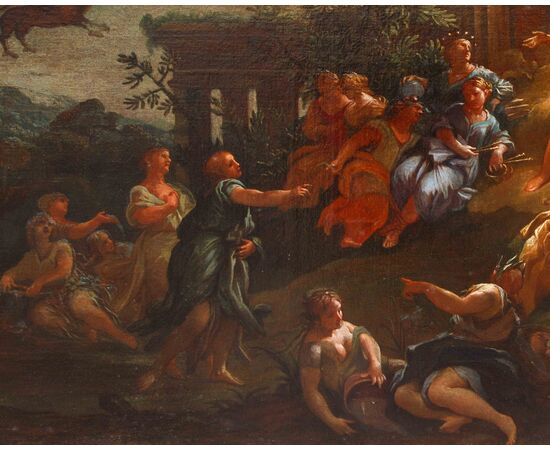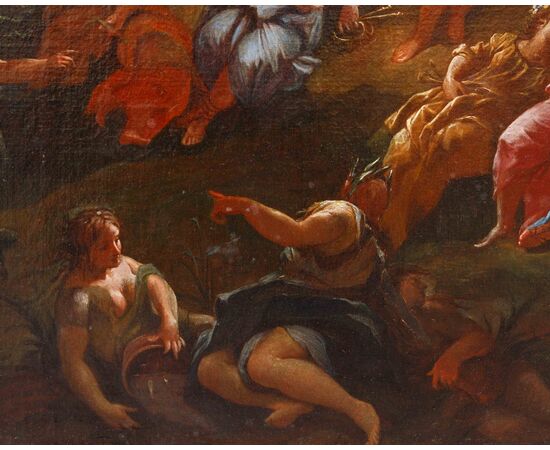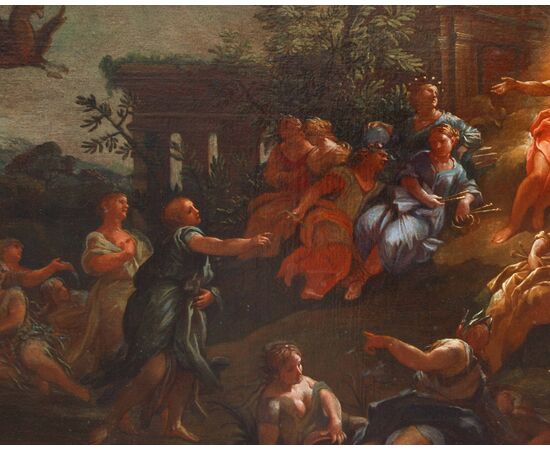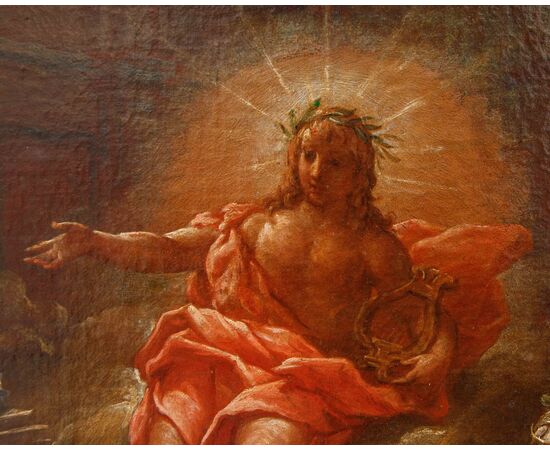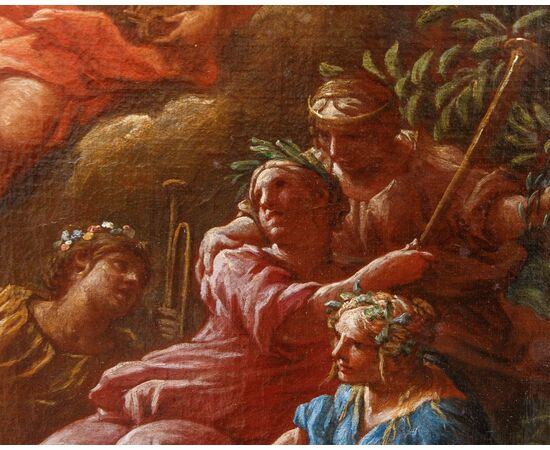Lazzaro Baldi (Pistoia, circa 1624 – Rome, 1703), The Parnassus
Lazzaro Baldi (Pistoia, approx. 1624 – Rome, 1703) The Parnassus Oil on canvas, 73 x 134 cm With frame, 84 x 148 cm Critical text by Prof. Alberto Crispo Lazzaro Baldi was born in Pistoia around 1624. Attracted by the fame of his fellow citizen Pietro Berrettini, better known as Pietro da Cortona, he began his pictorial training under his guidance and therefore reached him in Rome, where he was warmly welcomed. The erudite Pascoli, among the first biographers of the Tuscan master, recounts that he obtained his first commissions through Berrettini, who retouched his small paintings of sacred subjects which were then sent to Tuscany. Baldi's first public work was probably the Saint Francis in the third chapel on the left in S. Marco in Rome, from the period to which the seventeenth-century decoration of the church dates (1653-56). In this fresco, Baldi reveals himself to have been trained, in conjunction with Ciro Ferri, on the careful study of Cortona, while in his subsequent works, the three frescoes executed in 1657 in the gallery of Alexander VII in the Quirinal Palace, his style appears to evolve into a choice of light tones that will remain the typical range of his painting, now particularly appreciable. in the frescoes, as chromatic alteration has occurred in most of the canvases, which has produced a general darkening. Subsequently, Baldi reverts to the classicist setting of the painting, prohibiting himself the spatial illusionism typical of the Baroque, to compose on regular planes; examples are the complex of canvases and frescoes executed around 1671 in the chapel of S. Rosa in Santa Maria sopra Minerva, the Delivery of the Keys to Saint Peter in the oratory of Propaganda Fide and the Stories of St. Charles Borromeo and St. Philip Neri in S. Anastasia, from around 1679. The homage to Cortona is recurrent throughout Baldi's entire artistic production, as can be seen, for example, in the Madonna of the Rosary in S. Anastasia or in the Annunciation in S. Marcello al Corso. In his last period of pictorial activity, which seems to have ended a few years before his death, due to a supervening religious fervor, Baldi finds a vein of drama, in the flapping of lights and movements, which seems to refer to the painting of Lanfranco; and in this sense the Pistoia artist gives remarkable works, such as the Martyrdom of Saint Andrew in S. Andrea delle Fratte and the Madonna and Child and Saint Anthony in the Odescalchi palace in Bassano di Sutri. But most of the time his painting becomes blunted in a thickening and stiffening of the forms - for example in the canvases in S. Maria di Campomarzio (around 1685) or in the Miracle of Santa Zita in S. Croce dei Lucchesi (around 1695) which exclude her from a living and operating relationship with the major contemporary paintings. The works of mythological subject are relatively common as regards Baldi's pictorial corpus. This is evident with respect to two canvases currently exhibited at Palazzo Spada, the Parnassus and The Entrance of a Poet into the Parnassus: these two paintings have various similarities with our canvas. The marked chiaroscuro contrasts, the bright and vibrant colors, the synthetic and incisive representation of the figure of Apollo, the rendering of the characters through a series of rapid and syncopated segments of color unite the three canvases and certainly ascribe ours to Baldi's brush.

